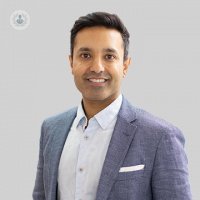An overview of video guidance surgery for dental implants
Written by:Video guidance surgery can be implemented in order to improve accuracy during a procedure, and is often the method of choice for dental implant surgery. But what are its advantages? Experienced implant & restorative dental surgeon Dr Amit Mohindra provides us with an overview of the surgery.
What is video guidance surgery?
Video-guided surgery is where a camera is used to guide the surgeon during a procedure.

What does video guidance for dental implants entail?
Video guidance for dental implants typically refers to the use of digital video technology to aid in the planning and placement of dental implants. This technology helps both dentists and patients to better understand the implant procedure and the associated treatment plan.
Examples of methods/ procedures used include:
- CBCT
- 3-D x-ray
- fixed landmarks
These are typically used to guide the implant surgeon to place the implants in a pre-planned position.
What advantages does it have over other types of surgery?
Video guidance for implant surgery leads to better accuracy, less trauma and quicker healing time for the patient.
Additionally, it allows Implants to be placed in areas where there is little bone, due to the accuracy of the procedure. Implants can often be placed without lifting the soft tissue and gum, meaning that the patient has a quicker surgical procedure.
As well as the benefits mentioned above, video guidance surgery results in:
- a more rapid healing time
- smaller incisions
- reduced blood loss
- reduced risk of infection
- less discomfort following surgery
Who is a candidate for this type of surgery?
Any patient who wishes to have a seamless procedure and outcome, with faster healing time is suitable for video guidance surgery. There are no limitations to who can undergo this type of surgery.
Does video guidance surgery have a high success rate?
Yes, video guidance surgery has a significantly high success rate. The majority of clinics use technology which has been the technology of choice of neurosurgeons for several years. My colleagues and I have been using Navident for over four years, with huge success.
If you would like to book a consultation with Dr Mohindra, do not hesitate to do so by visiting his Top Doctors profile today.


